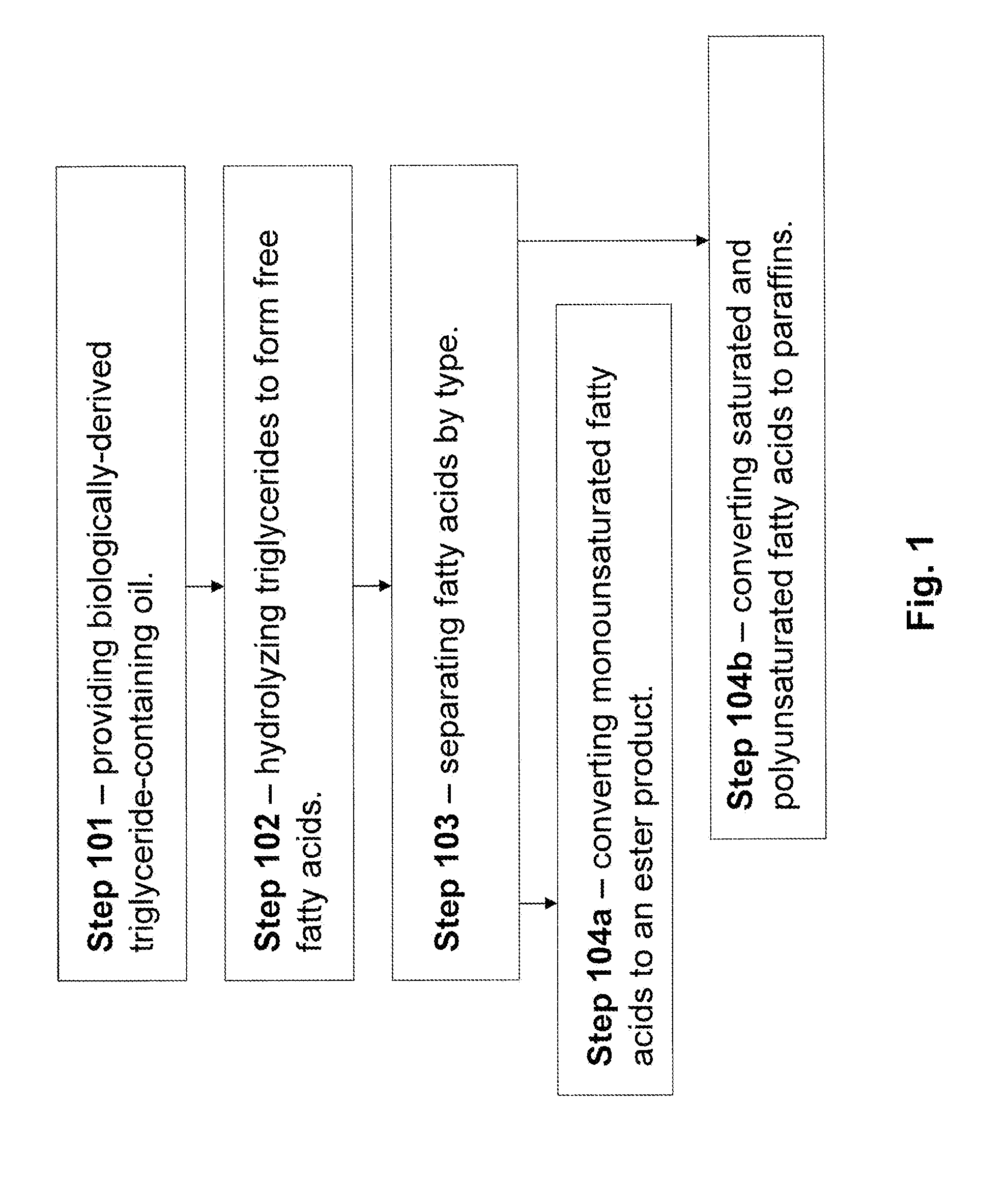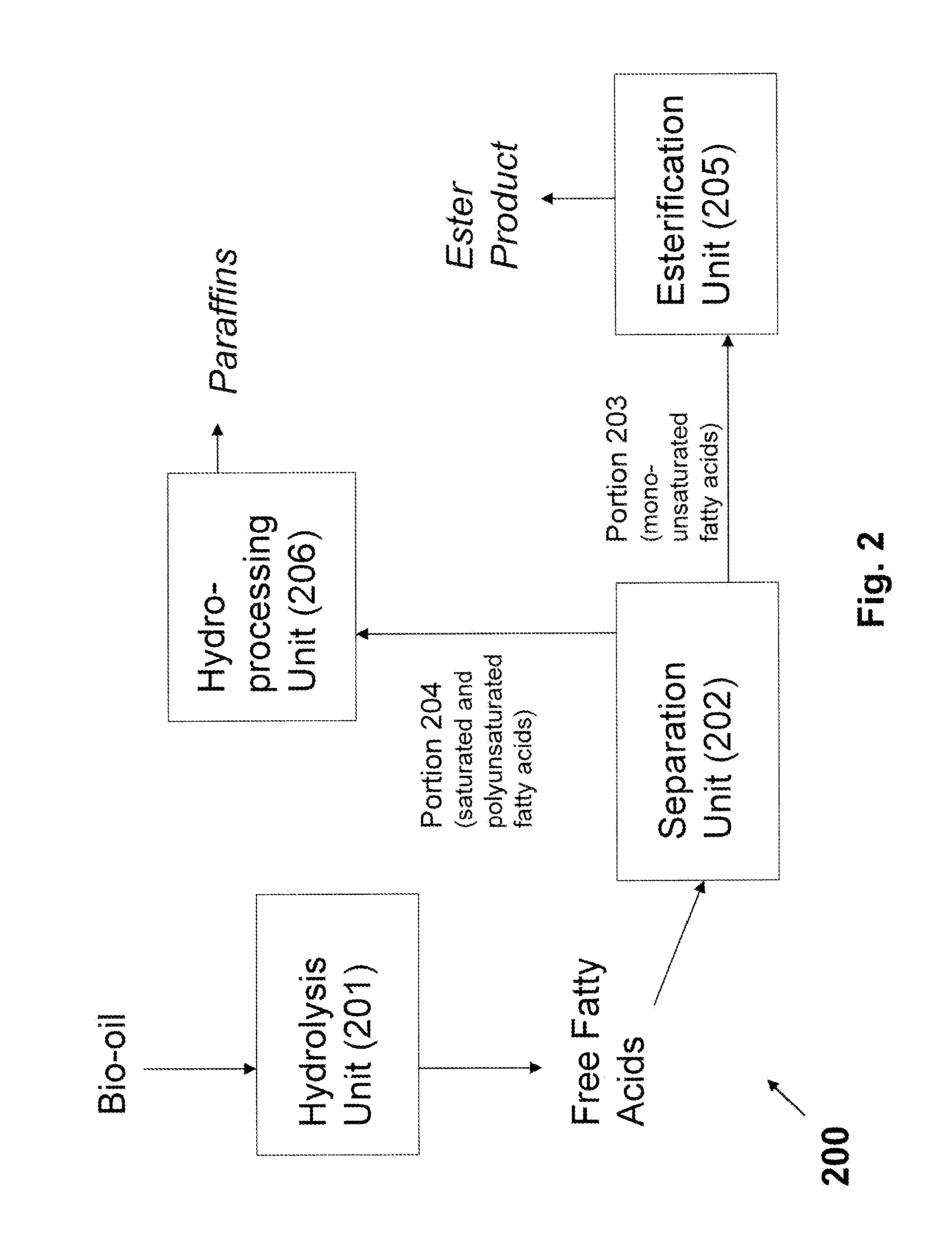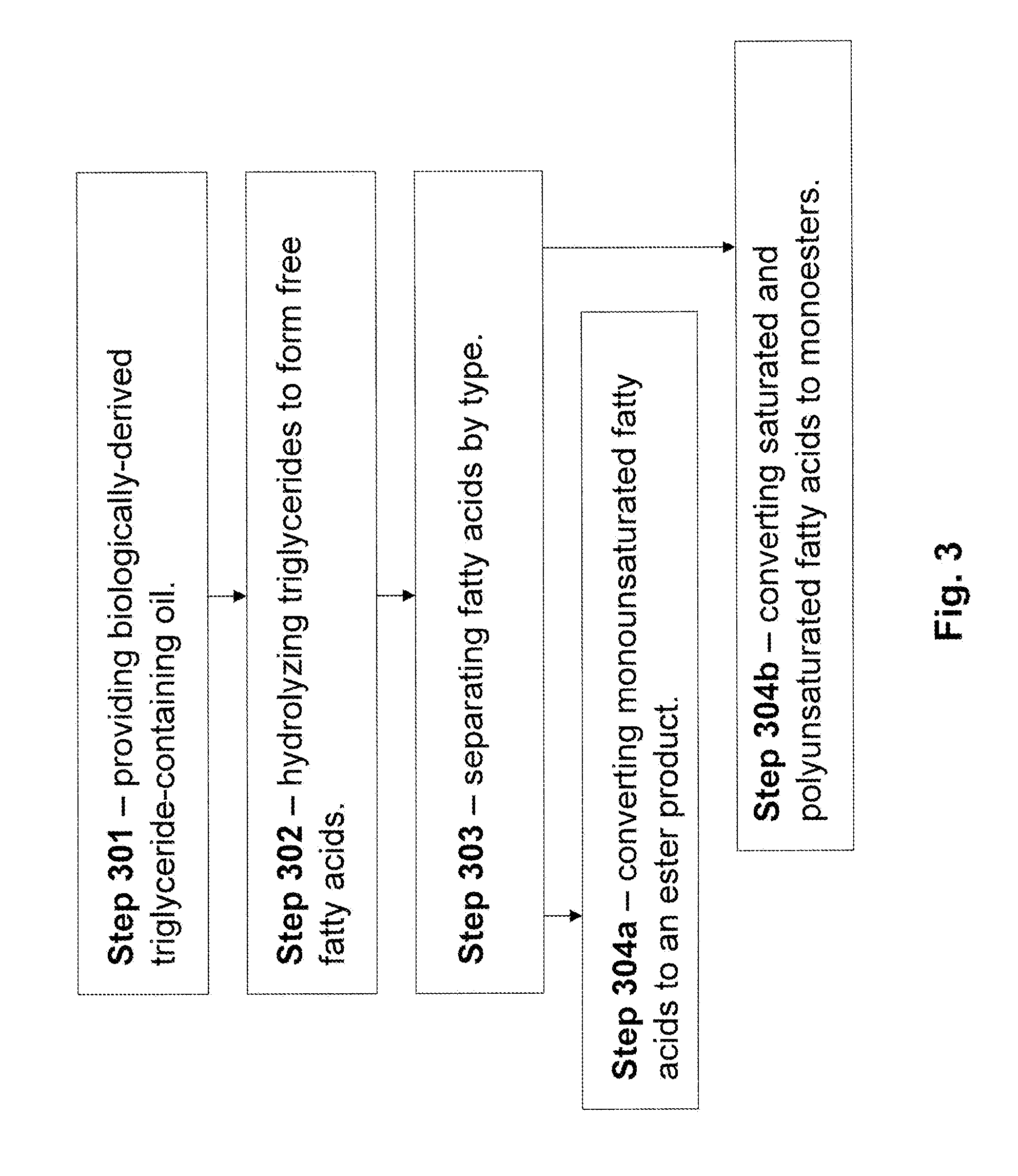Production of Biofuels and Biolubricants From a Common Feedstock
- Summary
- Abstract
- Description
- Claims
- Application Information
AI Technical Summary
Problems solved by technology
Method used
Image
Examples
example
[0073]This Example serves to illustrate how fractional crystallization can be utilized to separate fatty acids according to their degree of separation, in accordance with some embodiments of the present invention. Such separations are known in the art, as this Example is based on a procedure described by J. Singh et al., “The Component Fatty Acids of Penicillium Lilacium Fat,” Biochem. J., vol. 62, p. 222 (1956). Accordingly, it is the integration of such separations with the methods and systems of the present invention that is novel.
[0074]A mixture of fatty acids is prepared comprising: 46.89 g of oleic acid (a monounsaturated fatty acid), 16.23 g of linoleic acid (a polyunsaturated fatty acid), and 58.52 g of saturated fatty acid (total weight of mixture is 121.64 g). The composition of the mixture (by weight %) is: 38.56% oleic acid, 13.30% linoleic acid, and 48.12% saturated acid.
[0075]The above mixture is crystallized at −65° C. with 10 volumes of acetone (˜1.5 L). The first fi...
PUM
 Login to View More
Login to View More Abstract
Description
Claims
Application Information
 Login to View More
Login to View More - R&D
- Intellectual Property
- Life Sciences
- Materials
- Tech Scout
- Unparalleled Data Quality
- Higher Quality Content
- 60% Fewer Hallucinations
Browse by: Latest US Patents, China's latest patents, Technical Efficacy Thesaurus, Application Domain, Technology Topic, Popular Technical Reports.
© 2025 PatSnap. All rights reserved.Legal|Privacy policy|Modern Slavery Act Transparency Statement|Sitemap|About US| Contact US: help@patsnap.com



